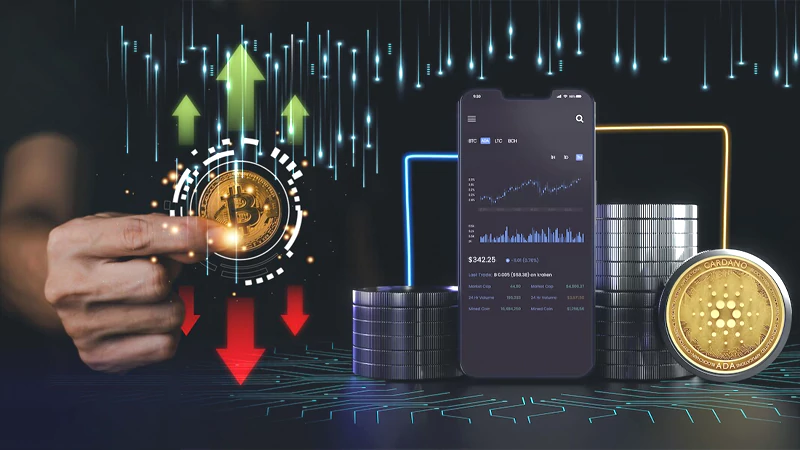When it comes to digital assets, one of the first things that come to the mind of investors is that they are notoriously volatile. Bitcoin may increase or decrease in price by 5-10% on any given day, while smaller cryptocurrencies may experience even wider price swings. Crypto trading signals The major reason for the crypto market is so volatile is relatively low liquidity compared to traditional markets like gold or stocks. Moreover, the crypto market is full of retail investors who can be quite emotional when buying or selling assets.
The crypto market is a completely new sector with a unique set of factors that may influence price changes. But besides crypto-native factors, some general economic rules that are used on all markets also work with crypto. Like in many other markets, it is not always clear what factor or its combination affects the price in a certain period. But still, if you know the basics, it would be easier to understand why cryptocurrency may experience such movements.
Supply and Demand
The value of any asset is determined by supply and demand, especially cryptocurrencies. When demand increases faster than supply, the price usually goes up and vice versa. In crypto, the supply is always known but it’s not always constant. For example, Bitcoin has a fixed max supply and a straight algorithm, gradually bringing circulating supply to max supply. It makes Bitcoin a deflationary asset and quite predictive in terms of supply. On the other hand, some cryptocurrencies have no cap on supply or even support mechanisms of “burning” existing coins to prevent the circulating supply from increasing too fast.
Each cryptocurrency has its own monetary policy, and sometimes it is dictated by the team in charge of the project, not by the embed algorithm. It means the developers may opt to release more tokens or burn them to manage the money supply. And such actions usually affect the price of a cryptocurrency. For example, Stellar Foundation burned half of XLM supply in November 2019, and the price surged by 15% in minutes after this event.
Demand usually increases as a project gains awareness and adoption. To analyze demand, you may look at trading volume and on-chain activity. If crypto adoption increase overcomes the circulating supply increase, then the cryptocurrency may see a surge in price. For instance, when institutional investors started actively buying Bitcoin in early 2021, its price rallied significantly as demand outstripped the pace at which new coins were created.
Production Cost and Token Utility
Production cost and utility of cryptocurrency are usually referred to as factors that form intrinsic value for digital assets. In some networks, new coins are produced through a process called mining, for example, in the Bitcoin network. Mining requires computing power to find and verify the next block on the blockchain. And to mine cryptocurrency, miners invest in expensive equipment and pay for electricity. Mining is a competition between different miners, so the more computing power joins the network, the more difficult it becomes to find new blocks.
If the value of crypto is not high enough to pay off mining fees, then miners won’t mine and support the network. Considering miners and validators are essential to making the blockchain function, their actions may influence the whole network and the price of the native cryptocurrency.
Besides, each network and cryptocurrency does exist for a certain purpose. But if a token doesn’t have any utility for users, it will be difficult to support its value and price. However, when crypto has become more useful for network participants, it may experience an increase in demand and price. For example, as more decentralized finance (DeFi) projects are launched on the Ethereum network, the more valuable Ether (ETH) becomes since it is required to perform transactions and smart contracts within the network. So when there was a surge in DeFi in 2020-2021, the Ethereum price also soared.
Market News and Regulations
The crypto market reacts rapidly to news, strengthening the existing sentiment or charging it drastically. The news may affect only a certain project or the whole market. For example, when there was news of the Brave browser’s integration with Solana, the Basic Attention Token (BAT) price surged by over 20%. A lot of investors tried to find how to buy Basic Attention Token, causing a temporary stir regarding this cryptocurrency. At that point, most cryptocurrencies have experienced a correction.
Another example is news about the Chinese ban on crypto mining and trading in September 2021 that influenced the whole market. Bitcoin dropped by over 5% in a day, while some other cryptocurrencies have seen an even bigger decline.
Regulators have been one of the main newsmakers in the crypto market in recent years. Cryptocurrencies are increasingly coming under the regulators’ spotlight but there is still a lot of uncertainty and confusion towards who should regulate cryptocurrencies and how. In some countries, cryptocurrencies are completely banned or have limited use, while others make them legal tender and free to use. Also, regulators’ attitude against crypto is prone to change in many countries, and it may have a negative or positive impact on the industry.
However, regulation is required to create a market with clear rules and offer easier ways to trade cryptocurrencies. Without regulation, there wouldn’t be ETFs and futures contracts that increase the value of cryptocurrencies and make crypto more attractive for institutional investors.
Understanding the principles of supply and demand and other core factors that influence cryptocurrency value should allow you to make more well-informed investing decisions. If you think demand is going to surge because of a particular reason and don’t believe supply will keep up, then such an asset could be good for potential investments. But keep in mind that crypto is a volatile asset, so consider following some risk management principles to be prepared for potential changes in market attitude.








